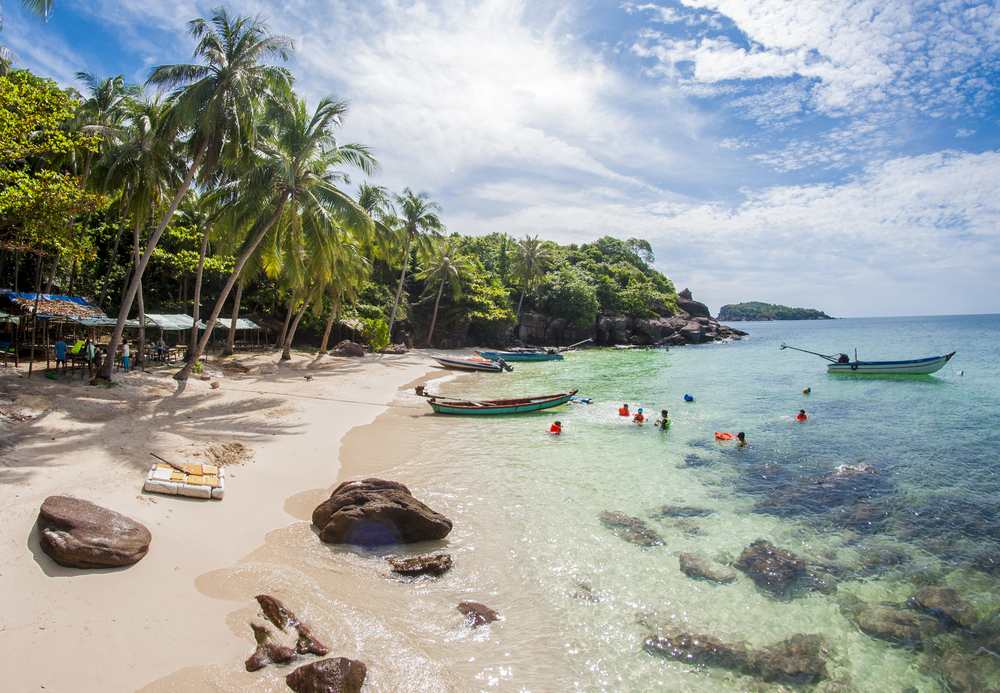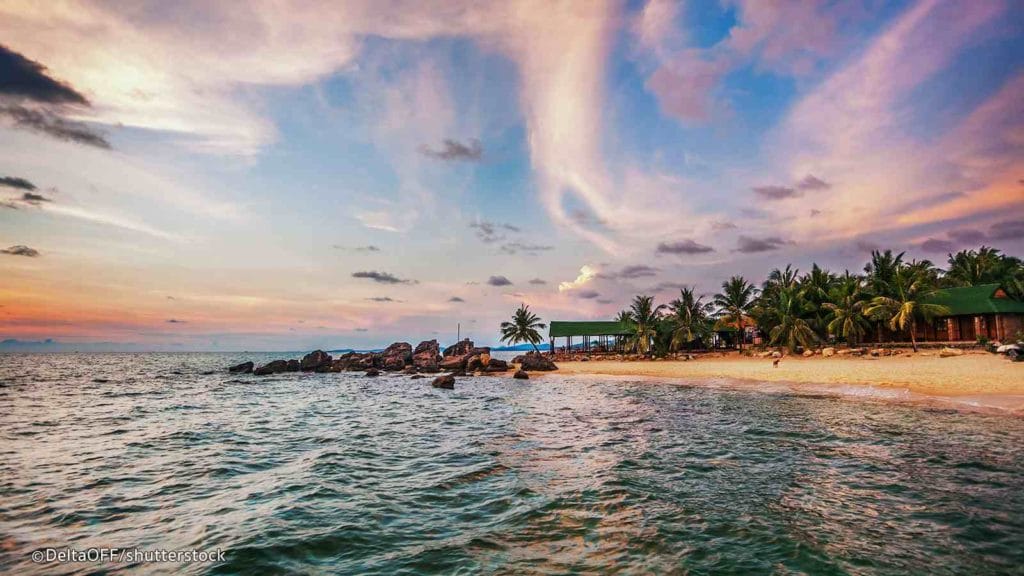Phú Quốc is the largest island in Vietnam. Phú Quốc and nearby islands, along with distant Thổ Chu Islands, is part of Kiên Giang Province as Phú Quốc District, the island has a total area of 574 square kilometres (222 sq mi) and a permanent population of approximately 103,000 Located in the Gulf of Thailand, the district of Phú Quốc includes the island proper and 21 smaller islets. Dương Đôngtown, is located on the west coast, and is also the administrative and largest town on the island. The other township is An Thoi on the southern tip of the island.
The economy is centred on fishing, agriculture and a fast-growing tourism sector. Phu Quoc has achieved fast economic growth due to its current tourism boom. Many infrastructure projects have been carried out, including several five-star hotels and resorts. Phu Quoc International Airport is the hub connecting Phú Quốc with mainland Vietnam and other international destinations.

From March 2014, Vietnam allowed all foreign tourists to visit Phú Quốc visa-free for a period of up to 30 days. By 2017, the government of Vietnam planned to set up a Special Administrative Region which covered Phu Quoc Island and peripheral islets and upgrades it to a provincial city with special administration.
Geography
Phú Quốc lies south of the Cambodian coast, west of Kampot, and 40 km west of Ha Tien, the nearest coastal town in Vietnam. Roughly triangular in shape the island is 50 kilometres (31 mi) long from north to south and 25 kilometres (16 mi) from east to west in the north at its widest. It is also located 62 nautical miles (115 km; 71 mi) from Rạch Giá and nearly 290 nautical miles (540 km; 330 mi) from Laem Chabang, Thailand. A mountainous ridge known as “99 Peaks” runs the length of Phú Quốc, with Chúa Mountain being the tallest at 603 metres (1,978 ft).
Phu Quoc Island is mainly composed of sedimentary rocks from the Mesozoic and Cenozoic age, including heterogeneous conglomerate composition, layering thick, quartz pebbles, silica, limestone, riolit and felsit. The Mesozoic rocks are classified in Phu Quoc Formation (K pq). The Cenozoic sediments are classified in formations of Long Toan (middle – upper Pleistocene), Long My, (upper Pleistocene), Hau Giang (lower – middle Holocene), upper Holocene sediments, and undivided Quaternary (Q).

Climate
The island’s monsoonal sub-equatorial climate is characterized by distinct rainy (June to November) and dry seasons (December to May). The annual rainfall is high, averaging 2,879 millimetres (9.446 ft). In the northern mountains up to 4,000 millimetres (13 ft) has been recorded. April and May are the hottest months, with temperature reaching 35 °C (95 °F).
